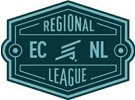Silicon Valley Eagles
The Silicon Valley Eagles Soccer Academy blog is a great source of soccer coaching tips, parents and players improvement tips and advises, and updates on the soccer world news.
Importance of Nutrients for Growth for Active Kids
- Font size: Larger Smaller
- Hits: 3278
- Subscribe to this entry
- Bookmark
 Even over the holidays, when your kids are training for sports, you want to provide them with the right foods to fuel their activities. You should also provide your child with the right foods to promote their growth. Certain nutrients are essential to achieve optimal growth; this helps their performance in sports and can help to promote their overall health. Here we consider which macro and micronutrients are vital for growing bodies and where these can be sourced in the diet.
Even over the holidays, when your kids are training for sports, you want to provide them with the right foods to fuel their activities. You should also provide your child with the right foods to promote their growth. Certain nutrients are essential to achieve optimal growth; this helps their performance in sports and can help to promote their overall health. Here we consider which macro and micronutrients are vital for growing bodies and where these can be sourced in the diet.
Protein
All tissues in the body contain protein. From the bones and muscles to the organs, all require an adequate supply of dietary protein for growth. If we break a bone, tear a muscle or accidentally cut ourselves, protein is also required for wound healing. The amount of protein your child needs each day depends on their age. Teenage boys require more protein in their diet than girls; this is demonstrated in the table below, which is based on figures provided by the CDC.
Although meat, fish, eggs and dairy produce might be the most obvious foods that supply protein, if your child follows a strict vegetarian diet, they can still meet their protein needs. Beans, peas, lentils, nuts, seeds and whole grains all supply useful amounts of protein. With the exception of soy, plant sources of protein don’t provide the full complement of essential amino acids. Amino acids are the building blocks that link together to form proteins. The essential amino acids are those that need to be sourced from the diet since the body is unable to produce them itself.
When only plant-based foods are eaten, a range of different sources of protein need to be included over the course of the day to provide sufficient essential amino acids. Here are some examples:
Porridge made a with a soy milk substitute for breakfast
Baked beans on wholegrain toast and a salad containing tofu for lunch
Seeds and whole wheat pasta for dinner
Carbohydrates
Besides fueling your child’s activities, carbohydrates are also needed to promote growth, as it is an energy intensive process. Carbohydrates need to be present at each meal and those that release their energy more slowly such as oats, grainy bread, pasta, brown rice and sweet potatoes are more beneficial. These have the added advantage that they are higher in fiber to support a healthy digestive system. They are also richer in nutrients such as B vitamins to aid energy release and function of the immune and nervous systems, as well as antioxidants to protect your child’s body from damaging free radicals, which are actually produced in higher quantities during exercise. Include regular carbohydrate rich snacks to meet the additional energy requirements brought by exercise to make sure your kids have sufficient energy for growth
Essential fatty acids
You constantly hear in the press that fats are bad for health so it’s understandable if you try to encourage your kids to have a low-fat diet. However, essential fatty acids – as their name suggests – are a vital dietary component since the body can't synthesize alone. Every cell in the body relies on these fats for their development and to help form the protective membrane around them; they are particularly important for the brain and nervous system. While most kids get more than enough omega-6 fatty acids which are sourced from the likes of corn, soy and sunflower oils, many don’t receive sufficient omega-3 fatty acids. These not only benefit the circulation, but are important for developing the eyes and brain in young children. Research has also shown omega-3 oils to benefit learning and memory, aiding school performance. However, more recently studies in animals have additionally shown promise for omega-3 to reduce ADHD symptoms, helping to improve behavior and concentration, which may help children with this condition to rely less heavily on medication for management of ADHD. The best source of these oils in the diet are oily fish such as sardines, mackerel and fresh tuna. Consider providing our children with fish at least twice weekly, one of which should ideally be an oily fish. If your child doesn’t eat fish, then canola and flaxseed oil, as well as walnuts offer an alternative source, which if eaten should be included throughout the week to offer sufficient omega-3s.
Calcium and vitamin D
These two nutrients are vital for bone health to ensure that your children will grow up to have strong bones more resistant to fractures. This is because calcium, along with the mineral phosphorus, helps to give bones their rigid structure. Vitamin D is needed by the body for the absorption of calcium. Guidelines recommend that elementary school aged children need 1000mg of calcium daily, rising to 1300mg by the time they reach high school. Dairy foods are one of the richest sources of calcium in the diet, with a cup of milk providing 300mg, 1oz of cheese giving 150mg and 6oz of yogurt offering 225mg. Tinned fish such as sardines are another good option for calcium if your kids eat the bones. Children who have a limited intake of dairy foods or avoid them would be best using a milk substitute fortified with calcium, which are available based on soy, oats, rice or nuts. Smaller amounts of calcium are also provided by leafy greens such as Kale, pulses, dried fruit and nuts. Meanwhile, few foods provide vitamin D – oily fish, egg yolks along with fortified milk, cereals and margarine are the exception – but the best source is synthesis in the skin when it is exposed to sunlight. Just 10 to 15 minutes of sun exposure daily will meet vitamin D requirements, but avoid the sun at its hottest when sun block isn’t used.
Iron
Although iron deficiency anemia is more commonly associated with tiredness and reduced cognitive function, it can also hinder growth in children. This form of anemia is actually on the increase in the US and although treatable with iron supplements, these frequently leads to digestive upsets; it’s preferable to ensure your child receives an iron rich diet to prevent anemia from occurring. Red meat and liver remain the richest sources of dietary iron, but if your kids don’t eat meat that isn’t a problem. Breakfast cereals with added iron offer a good option and the mineral can also be found in eggs, pulses (especially soy beans and tofu), green leafy vegetables such as spinach and kale, dried fruit and bread. The iron from non-meat sources is less efficiently absorbed by the body, but this can be enhanced by including vitamin C rich fruit or vegetables at mealtimes and by discouraging tea or coffee near meals.
By encouraging a diet rich in the components mentioned above you can give your kids the best chance of growing well, which will in turn help to boost their sporting performance.







